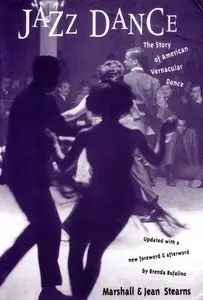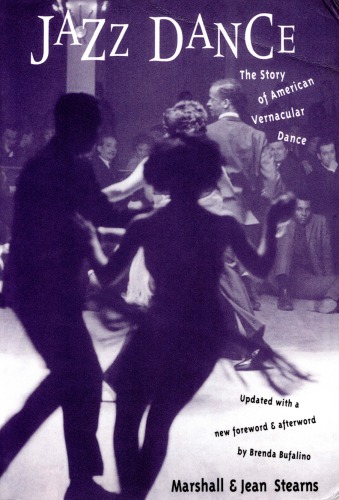Jazz Dance: The Story Of American Vernacular Dance by Marshall Stearns
English | Mar 22, 1994 | ISBN: 0306805537 | 508 Pages | PDF | 43.4 MB
English | Mar 22, 1994 | ISBN: 0306805537 | 508 Pages | PDF | 43.4 MB
Best book about American vernacular dance ever written.
There is no other dance book on the market (and thank heavens that this one has remained available since it was first published in 1968) that is as useful, delightful to read or as authoratative as Marshall & Jean Stearn's "Jazz Dance". Indeed, it is, in my opinion, one of the best books ever written about any facet of show business.
Vernacular dance in 20th century America wasn't represented or devised solely by a handful of the best remembered: Vernon & Irene Castle, Bill Robinson, Fred & Ginger, Eleanor Powell, Hal Le Roy, the Nicholas Brothers, Gene Kelly, Ann Miller, Donald O'Connor and Bob Fosse.
From the age of variety saloons and minstrelsy through a century of vaudeville and nightclubs, there were hundreds of dancers, black and white, female and male, who contributed to the development of American vernacular (or jazz) dance. Hoofers invented, borrowed, stole and adapted rhythm steps, jumps, slides, contortions and even style from each other–-and American dance became richer for their efforts.
Marshall Stearns understood that. Instead of choosing to write about the best known dancers of his day, the ones blessed by luck, Stearns took on the nearly impossible task of interviewing every dancer of ability he could locate. Some like King Rastus Brown, Ginger Wiggins and Groundhog were remarkable talents known only by a very few–most of whom were other dancers who held them in high esteem. Others like John Bubbles, Ida Forsythe, James Barton, Pete Nugent, Eddie Rector, Alice Whitman, Willie Covan and Harlan Dixon were peerless dancers of their day but forgotten despite years of stardom. Mr. Stearns brought more than a hundred fine hoofers to tell their stories to readers and dance enthusiasts.
Stearns wove those stories together without forcing themes and, within the warp and woof of his narrative, emerged bits of social history and showbiz lore, explanations of certain dance steps, claims and counter-claims as to origins and originality, faulty recollections and all but forgotten gems of clearly remembered facts.
Many reputations emerged brightly restored in luster while others, perhaps more famous, proved less admired by professionals who had more discerning views than fans with less knowledge of dance.
Whenever I need to check a fact about vernacular dance–jazz dance or tap–I turn first to Marshall Stearn's invaluable book.



